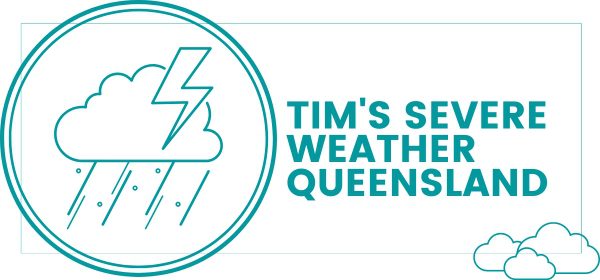Table of Contents
Did you know that Australian wildlife is being significantly impacted by severe weather events?
Climate change, with its rising temperatures, changing weather patterns, and natural disasters like bushfires and floods, is posing immense challenges to native species. The effects of severe weather on Australian fauna are far-reaching, threatening the survival of many iconic animals. Immediate attention is required to mitigate the consequences and protect our unique wildlife.
Key Takeaways:
- Climate change is adversely affecting Australian wildlife through rising temperatures and extreme weather events.
- Habitat loss, altered behaviors, and threats to survival are among the multifaceted effects of severe weather on Australian fauna.
- Understanding the implications of climate change on wildlife health, including the spread of diseases and changes in food availability, is crucial for conservation efforts.
- Urgent action is needed to protect endangered species and ensure the well-being of ecosystems and future generations.
- Funding landcare initiatives and increasing investment in biodiversity conservation are essential for safeguarding Australian fauna.
Climate Change and Wildlife Health
Climate change poses significant threats to the health of Australian wildlife, exacerbating existing challenges and placing additional stress on already vulnerable species. The impact of climate change on wildlife health is evident at both individual and population levels, with direct and indirect consequences affecting various aspects of their well-being.
One of the key ways that climate change impacts wildlife health is through the disruption of the delicate balance between environment, host, agent, and vector, making it a “threat multiplier” for diseases. Rising temperatures, extreme events, air quality, vector-borne diseases, water-related illnesses, access to safe and nutritious food, and mental well-being are all crucial factors that contribute to the categorization of climate-associated illnesses.
In order to effectively manage and mitigate the impact of climate change on wildlife health, it is essential to understand the vulnerabilities and resilience of Australian wildlife to these changes. This knowledge allows for targeted disease management strategies and the implementation of measures that can help protect and support the well-being of native species.
“The additional stress of climate change can have devastating effects on already threatened Australian wildlife, both at the individual and population level.”
Threats to Australian Wildlife from Climate Change
Climate change poses a range of threats to Australian wildlife. Rising temperatures can cause heat-associated illnesses, particularly impacting species outside their natural temperature range. Extreme events such as bushfires, floods, and storms not only directly harm and displace animals but also have long-term consequences such as habitat loss and increased predation risk.
The decline in air quality due to climate change contributes to respiratory issues in wildlife, leading to lung diseases and susceptibility to secondary infections. Changes in vector distribution and abundance, fueled by climate change, can result in the spread of vector-borne diseases. Water-related issues, including contamination and limited availability, further affect the health and survival of native species.
Climate change also impacts food availability, leading to scarcity and nutritional deficiencies in wildlife. Furthermore, the mental health and well-being of animals are connected to their physical and functional domains, both of which are disrupted by climate change, contributing to psychological stress.
The combined impacts of these climate change threats place Australian fauna at significant risk, making urgent action necessary to protect and conserve wildlife for future generations.
Temperature Impacts on Wildlife
Rising temperatures associated with climate change can have severe consequences on the health of wildlife. As temperatures continue to rise, animals outside their natural temperature range are at risk of developing heat-related illnesses. This can lead to various health issues, including blood vessel damage, body-wide inflammation, and even fatal multisystem diseases.
Aquatic species, in particular, face significant challenges due to the increasing temperatures. Sea temperatures have reached a 400,000-year high, resulting in adverse impacts on marine species. One notable example is coral bleaching, where increased temperatures cause corals to expel the algae living within their tissues, leading to their death and the subsequent collapse of the coral reef ecosystem.
Australian wildlife, both terrestrial and aquatic species, are vulnerable to heat stress and other temperature-related health concerns caused by climate change. As temperatures continue to rise, these native species face an increasing risk of physiological stress and potential population declines.
Effects of Rising Temperatures on Wildlife Health |
Examples |
|---|---|
Heat stress |
|
Physiological impacts |
|
Impacts on reproduction and population dynamics |
|
It is essential to prioritize efforts to mitigate climate change and reduce greenhouse gas emissions to minimize the impacts of rising temperatures on wildlife health. Protecting and conserving the habitats of Australian fauna is crucial to ensure their long-term survival in the face of climate change.
Extreme Events and Wildlife Impact
Climate change is associated with an increased frequency and severity of extreme events, such as bushfires, floods, storms, heatwaves, cold waves, and droughts. These events have a devastating impact on Australian wildlife, with far-reaching consequences for their survival.
Bushfires and Wildlife
Bushfires pose a significant threat to Australia’s unique fauna. The 2019-2020 “Black Summer” bushfires were particularly destructive, resulting in the loss of an estimated 1 to 3 billion animals. The intense heat, smoke, and flames decimated habitats, causing widespread displacement, injuries, and death.
Bushfires not only directly harm animals but also expose them to secondary risks. The loss of vegetation means reduced food and shelter, exposing survivors to starvation and predation. The destruction of their habitats also leaves them vulnerable to disease outbreaks and increased competition for limited resources.
The impact of bushfires on Australian wildlife is immense. Iconic species such as koalas, kangaroos, and wombats have suffered significant population declines, leading to an elevated risk of extinction. Urgent action is needed to protect and restore their habitats, implement effective fire management strategies, and support organizations dedicated to wildlife rescue and rehabilitation.
Floods and Wildlife
While bushfires ravage certain areas, floods pose a different threat to Australia’s wildlife. Heavy rainfall and overflowing rivers can result in significant habitat loss, drowning, and displacement of animals. Aquatic species, such as fish and amphibians, may be particularly affected when their natural habitats become inundated.
The aftermath of floods can also create challenges for wildlife. Contaminated water, reduced food availability, and increased predation risk further exacerbate their vulnerability. However, floods can also bring short-term benefits, providing temporary water sources and stimulating plant growth, which can support some species during recovery.
Severe Weather Events and Habitat Loss
Severe weather events, including storms, heatwaves, cold waves, and droughts, can result in habitat loss for Australian wildlife. Storms and cyclones can uproot trees, destroy nesting sites, and flood coastal areas, impacting both terrestrial and marine species.
Heatwaves and cold waves can be equally detrimental to wildlife. Extreme temperatures can lead to heat stress, dehydration, and even death. Cold temperatures can cause hypothermia and reduce food availability, particularly affecting species adapted to warmer climates.
Implications for Australian Fauna
The consequences of these extreme events go beyond immediate injuries and displacement. Habitat loss, food and water scarcity, increased predation risk, and susceptibility to infectious diseases all threaten the survival of Australian fauna.
To illustrate the magnitude of the impact, let’s explore the consequences of the 2019-2020 bushfires on wildlife:
Consequences |
Impact on Australian Wildlife |
|---|---|
1. Habitat Loss |
The destruction of millions of hectares of habitat, leaving wildlife without shelter and food sources. |
2. Displacement |
Animals forced to move to unfamiliar territories, facing increased competition for limited resources. |
3. Injury and Death |
Direct injuries from burns, smoke inhalation, and trauma. The loss of life, particularly among vulnerable populations. |
4. Food and Water Scarcity |
Limited access to nutritious food and clean water, leading to malnutrition and dehydration. |
5. Increased Predation Risk |
Predators targeting weakened and displaced animals, further impacting population numbers. |
6. Disease Outbreaks |
Vulnerable wildlife becoming more susceptible to diseases due to stress, weakened immune systems, and overcrowding. |
These consequences highlight the urgent need for comprehensive conservation strategies, including habitat restoration, predator management, and ongoing wildlife monitoring.
Furthermore, proactive measures, such as implementing early warning systems, improving firefighting capabilities, and promoting sustainable land management practices, are essential for mitigating the impact of severe weather events on Australian fauna.
Air Quality and Wildlife Health
Climate change poses a significant threat to the respiratory health of Australian wildlife. As air pollution increases due to climate-related factors, including smoke, allergens, particulate matter, and ozone, the respiratory system of wild animals is put at risk. The inhalation of pollutants can cause lung diseases and damage the respiratory tracts of various species, making them more susceptible to secondary infections. Furthermore, poor air quality can lead to cardiovascular disorders in wildlife.
In particular, bushfire smoke has been a major concern for the respiratory health of Australian wildlife. During bushfire events, animals are exposed to high levels of smoke, resulting in mortality events and significant pulmonary lesions. The impact of this inhalation of smoke can be devastating, with long-lasting health effects on affected animals.
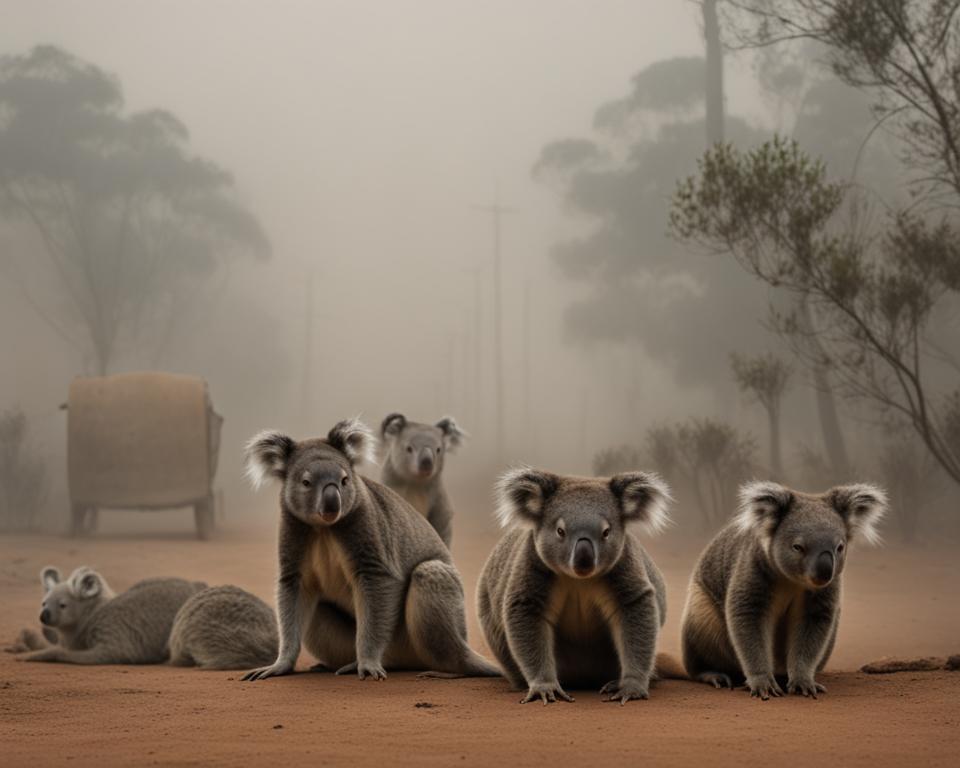
Air Pollutant |
Impact on Wildlife |
|---|---|
Smoke |
Respiratory diseases, lung damage, pulmonary lesions |
Allergens |
Allergic reactions, respiratory distress |
Particulate Matter |
Respiratory problems, reduced lung function |
Ozone |
Lung inflammation, oxidative stress |
It is crucial to address air pollution and its impact on Australian wildlife to ensure the long-term health and survival of native species. Efforts should be made to minimize air pollution, reduce carbon emissions, and improve air quality to safeguard the respiratory well-being of our unique wildlife.
Vector-Borne Diseases and Climate Change
Climate change is playing a significant role in the spread of vector-borne diseases, posing a threat to Australian wildlife. The combination of increased rainfall and longer warm seasons creates favorable conditions for arthropod vectors such as mosquitoes, flies, ticks, and fleas. These vectors play a crucial role in transmitting infectious diseases to both humans and animals.
The changing climate has led to the expansion of disease transmission to higher latitudes and altitudes, including areas where these diseases were previously uncommon. This expansion increases the vulnerability of Australian wildlife to the risks associated with vector-borne diseases.
Table: Examples of Vector-Borne Diseases Impacted by Climate Change
Disease |
Vector |
Effects on Australian Wildlife |
|---|---|---|
Malaria |
Mosquitoes |
Malaria can infect native marsupials and birds, affecting their health and survival. |
Lyme disease |
Ticks |
Native animals, such as kangaroos and wallabies, can be exposed to Lyme disease through tick bites, leading to health complications. |
Dengue fever |
Mosquitoes |
Australian wildlife, including reptiles and mammals, can serve as reservoirs for dengue virus, contributing to its persistence and potential transmission to humans. |
The consequences of changes in vector distribution and abundance due to climate change are far-reaching. These changes can disrupt ecosystems, affect biodiversity, and impact the health and survival of native species. It is imperative to understand the interactions between climate change, vector behavior, and disease transmission to develop effective strategies for disease management and wildlife conservation.
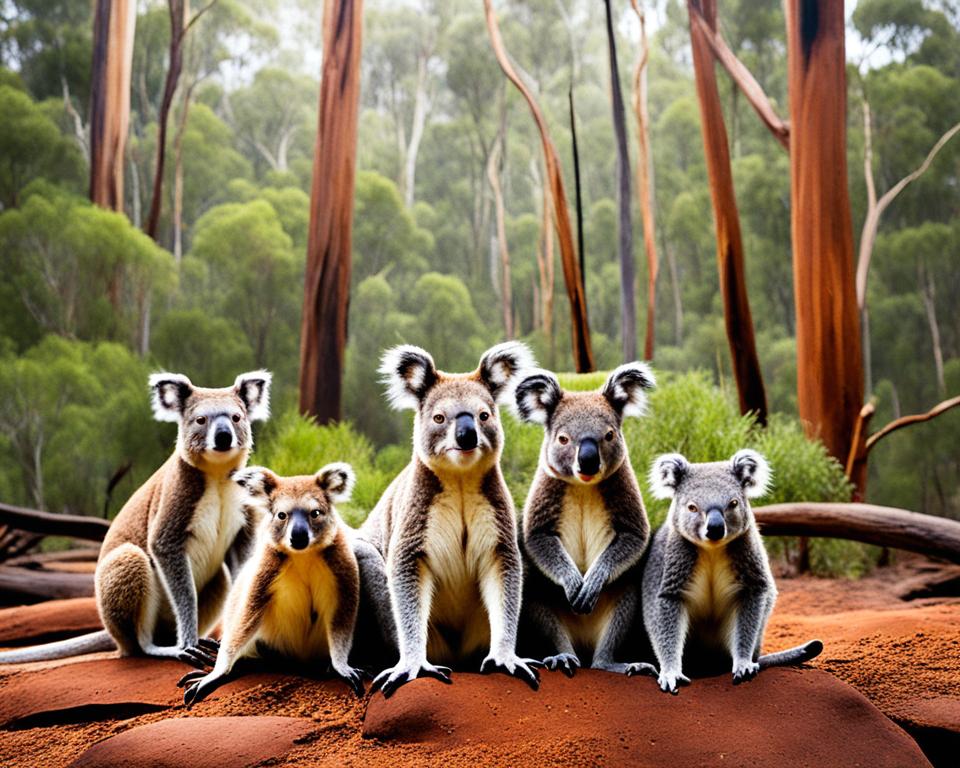
Quotes:
“Climate change has created a perfect storm for the proliferation of vector-borne diseases, threatening the health and resilience of Australian wildlife.”
“The expanding distribution of vectors due to climate change poses a significant challenge for wildlife conservation, requiring proactive measures to mitigate disease transmission.”
Water-Related Issues and Wildlife Health
Climate change poses significant challenges to the health of wildlife and the delicate balance of ecosystems. In this section, we will explore the impact of water-related issues on Australian animals and the consequences of drought and water contamination.
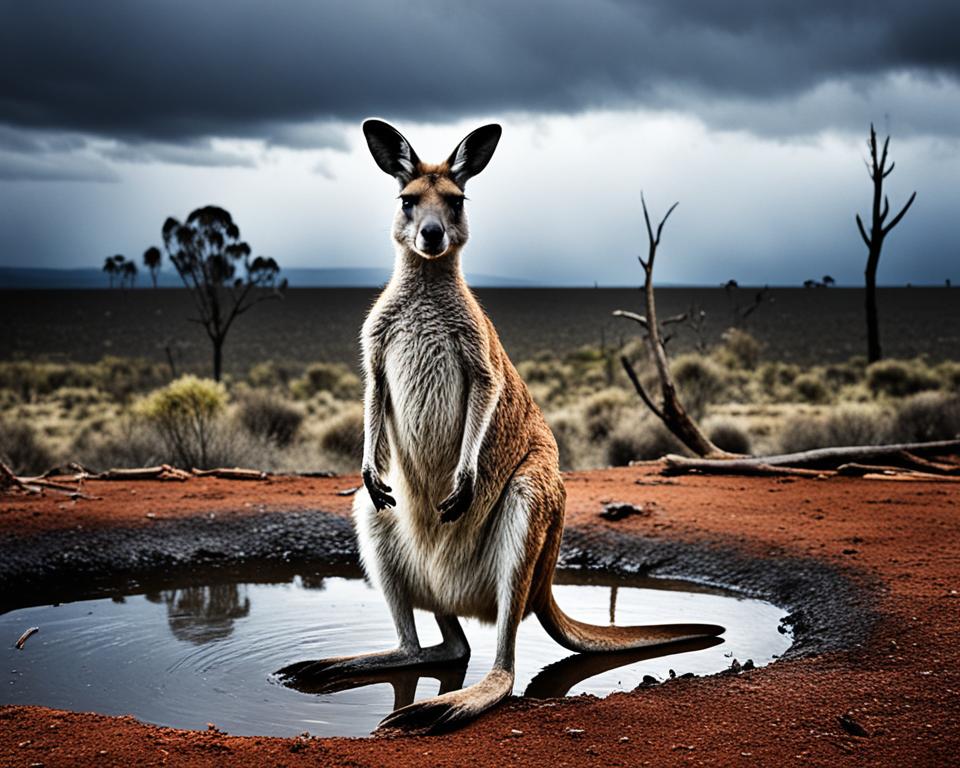
Increased precipitation and rising temperatures caused by climate change contribute to water source contamination, introducing terrestrial pathogens into aquatic ecosystems. This contamination can lead to the growth, survival, and toxicity of microorganisms, posing a threat to the health of aquatic species. Waterborne diseases can spread rapidly, affecting the survival and well-being of native fauna.
The Impact of Drought on Australian Wildlife
Drought conditions worsen the availability of water, forcing wildlife to congregate around limited water sources. This increased competition for resources can lead to heightened predation and aggression interactions among animal populations. Semiaquatic species, such as the platypus, are particularly vulnerable during severe droughts, as reduced water availability threatens their survival.
Water Contamination and Wildlife
Water contamination jeopardizes the delicate balance of aquatic ecosystems, affecting a wide range of species. The presence of terrestrial pathogens in water sources can lead to the proliferation of harmful microorganisms, altering the natural order of the ecosystem. Aquatic animals may suffer from waterborne diseases, reduced reproductive success, and even population declines.
Drought Effects on Australian Animals
Drought has severe implications for Australian wildlife, causing water scarcity and habitat degradation. As water sources dry up, animals are forced to search for limited water supplies, increasing their vulnerability to predation and conflicts over resources. The prolonged drought periods exacerbate the challenges faced by already threatened species, pushing them closer to the brink of extinction.
Case Study: The Impact on Platypuses
Platypuses, unique semiaquatic mammals native to Australia, heavily rely on healthy freshwater ecosystems. Drought conditions and reduced water availability directly threaten their survival. As their habitats shrink, platypuses face increased predation risk, diminished food sources, and restricted movement. Sustaining their populations requires effective conservation efforts and the preservation of their freshwater habitats.
Water-Related Issues |
Impacts on Wildlife |
|---|---|
Water contamination |
Spread of waterborne diseases Altered ecosystem dynamics |
Drought |
Increased competition for water Higher predation and aggression interactions Threats to semiaquatic species |
Addressing water-related issues and their impacts on Australian animals is crucial for the preservation of biodiversity and the health of ecosystems. By implementing strategies to reduce water contamination and managing water resources during droughts, we can help mitigate the threats faced by wildlife and foster a sustainable environment for future generations.
Impacts on Food Availability for Wildlife
Climate change poses a significant threat to the food security of Australian wildlife. The alteration of temperature and moisture levels in the environment directly affects the growth and availability of food sources, leading to food scarcity and nutritional deficiencies in native species.
The elevated atmospheric CO2 levels resulting from climate change also have detrimental effects on the nutritional quality of plants, which impacts the diets of herbivorous species. As a result, these species may suffer from imbalances in essential nutrients, hampering their overall health and reproductive success.
The decline in prey species caused by climate change has wide-reaching consequences for entire food webs. When prey populations dwindle, predator populations are affected, disrupting the delicate balance of ecosystems. This ripple effect alters nutrient cycling and the structure of ecosystems, further exacerbating the challenges faced by wildlife.
Ensuring sufficient and nutritious food sources for Australian wildlife is crucial for their survival and well-being. Conservation efforts must focus not only on protecting habitats but also on implementing measures to mitigate the impact of climate change on food availability. By preserving and restoring ecosystems, we can help safeguard the delicate balance of wildlife nutrition and promote the resilience of native species.
Impacts on Food Availability for Wildlife |
Consequences |
|---|---|
Food scarcity and nutritional deficiencies |
Reduced body condition, impaired reproduction, and compromised immune systems in wildlife. |
Disruptions in food chains and ecosystems |
Alteration of nutrient cycling, population imbalances, and the potential for cascading effects throughout the food web. |
Loss of keystone species |
Impacts on the stability and integrity of ecosystems, leading to further declines in biodiversity. |
Climate change threatens not only the availability but also the quality of food for Australian wildlife. To safeguard our unique fauna, we must act urgently to address the root causes of this crisis and implement strategies that protect and restore their food sources.
Mental Health and Well-being of Wildlife
Climate change has profound effects on the mental health and well-being of wildlife, which are critical components of their overall welfare. The changing climate directly impacts animals in various ways, including their nutrition, physical environment, health, and behavioral interactions, leading to psychological stress. These stressors disrupt the intricate balance of their physical and functional domains, further compromising the well-being of Australian wildlife.
The mental health of wildlife is closely intertwined with their physical and functional well-being. Climate change disrupts this balance, resulting in heightened stress levels and compromised mental states for many animal species. This can lead to behavioral changes, reproductive disruptions, and increased vulnerability to diseases and predation.
Additionally, the mental health and well-being of humans involved in wildlife care and protection are also significantly affected by climate change. The challenges posed by changing environments and the increasing threats to animal welfare can take a toll on the caretakers, potentially impacting the quality of care provided to the animals.
Recognizing the importance of mental well-being in animals and the interconnectedness between human and animal welfare is crucial in addressing the impacts of climate change. Efforts should be made to mitigate the stressors caused by climate change, protect natural habitats, and promote sustainable conservation practices to ensure the well-being and survival of Australian wildlife.
Impact of Severe Weather on Australian Wildlife Extinction
The severe weather and climatic changes caused by climate change are pushing many Australian animal species towards the brink of extinction. The State of the Environment report highlights the immediate action required to reverse the decline of flora and fauna in Australia. The report mentions several species, including the blue-tailed skink, central rock-rat, Christmas Island flying fox, and the sandalwood tree, that are at significant risk of extinction due to habitat loss, introduced predators, and the cumulative impacts of severe weather events. Urgent measures are needed to protect and conserve endangered Australian wildlife.
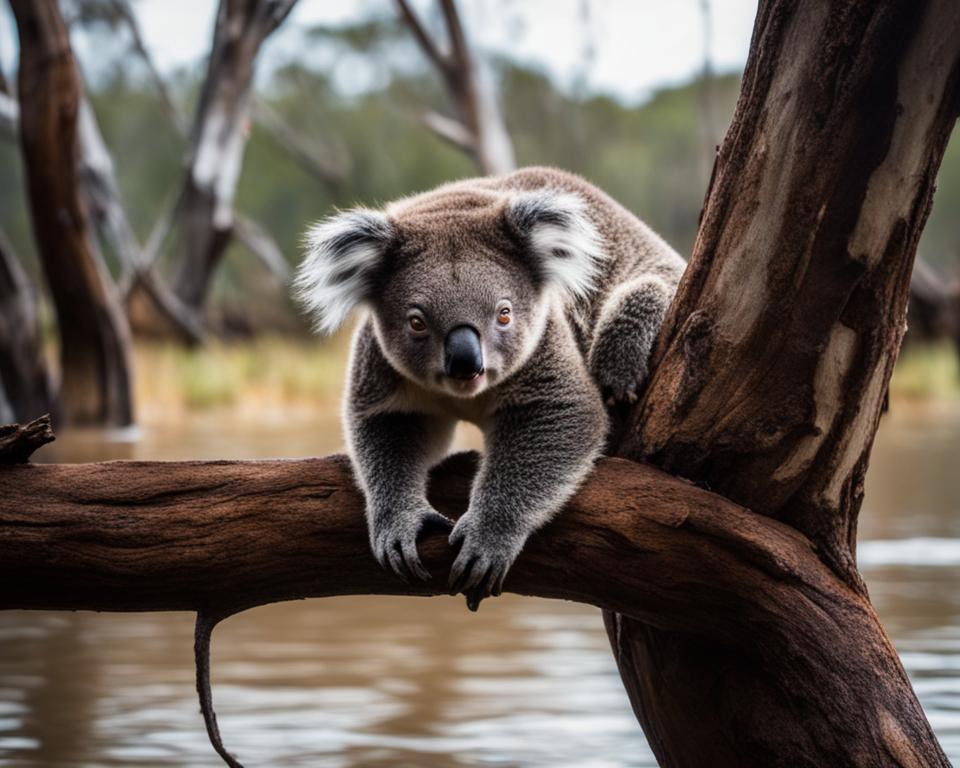
Threatened Species at Risk of Extinction
Species |
Habitat Loss |
Introduced Predators |
Severe Weather Events |
|---|---|---|---|
Blue-tailed skink |
High |
Medium |
High |
Central rock-rat |
High |
Low |
High |
Christmas Island flying fox |
Low |
Low |
High |
Sandalwood tree |
High |
Low |
Medium |
“The cumulative impacts of severe weather events, along with other threats such as habitat loss and introduced predators, are pushing these species to the brink of extinction. Urgent action is needed to protect and conserve these endangered Australian animals.” – State of the Environment report
Devastating Effects of Bushfires on Kangaroo Populations
Bushfires have had a devastating impact on kangaroo populations in recent years. An estimated 4.96 million macropods, including kangaroos, wallabies, and pademelons, were affected by bushfires, leading to injuries, predation, and a lack of access to food and water.
The destruction caused by fires further exacerbates the challenges faced by kangaroos, which are also threatened by habitat loss, drought, and other severe weather events. The commercial killing of kangaroos authorized by the Australian government adds to the already dire situation for these iconic Australian animals.
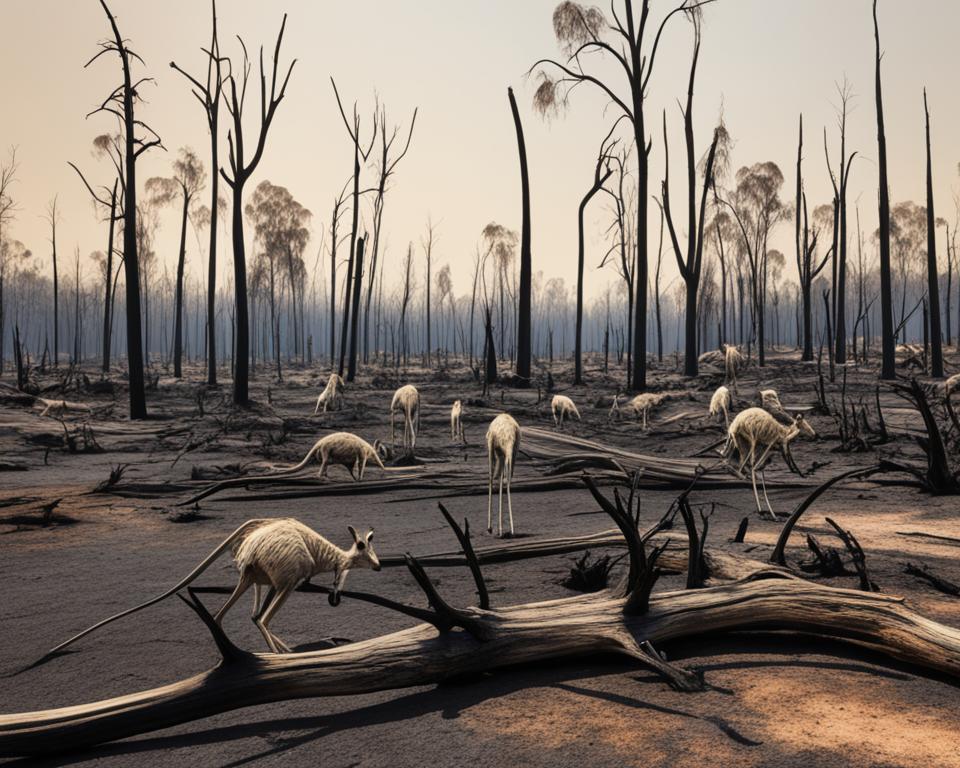
The survival of kangaroo populations is intricately tied to the availability of suitable habitat, as well as access to sufficient food and water resources. Bushfires not only destroy crucial vegetation that forms their primary food source but also contribute to the fragmentation and loss of their habitats.
Kangaroos, being highly mobile animals, have the ability to escape fires more successfully than many other species. However, the intensity and frequency of bushfires in recent years have left them with limited options for escape, leading to fatal consequences.
The Impact of Bushfires on Kangaroo Populations:
Effects |
Consequences |
|---|---|
Injuries |
Severe burns, lacerations, and bone fractures |
Predation |
Increased vulnerability to predators due to reduced cover |
Food scarcity |
Destruction of vegetation leads to a lack of suitable food sources |
Water scarcity |
Loss of water sources due to contamination or destruction |
The cumulative effect of these factors has resulted in significant population declines and increased stress on surviving kangaroos. The loss of genetic diversity and reduced reproductive rates further threaten the long-term survival of kangaroo populations in Australia.
Bushfires not only pose an immediate risk to kangaroos but also have long-term implications for their continued existence. Urgent action is needed to address the underlying causes of these devastating fires and implement measures that ensure the protection and conservation of kangaroo populations.
Preserving the habitats that support kangaroos, implementing effective fire management strategies, and addressing climate change are all crucial steps in safeguarding the future of these iconic Australian animals.
Threats of Changing Climate to Kangaroo Survival
Kangaroos, the iconic marsupial species of Australia, face significant threats to their survival in the changing climate. Climate change, characterized by increasing temperatures, more frequent heatwaves, and changing rainfall patterns, poses numerous challenges that impact kangaroo populations across the country.
The availability of food and water, crucial factors for kangaroo survival, is directly influenced by climate conditions. As temperatures rise and rainfall patterns shift, the distribution of vegetation changes, leading to a decrease in suitable food sources for kangaroos. The scarcity of nourishment has a cascading effect on their population abundance.
Studies have shown that during droughts, kangaroo populations can decline by up to 60%. This decline is particularly pronounced among young individuals and older males, which are more susceptible to the adverse effects of climatic extremes. The limited resources available during these periods of extreme weather make it challenging for kangaroos to sustain healthy populations.
Furthermore, kangaroos have a slow reproductive rate, with females typically producing one joey per year. This reproductive constraint makes kangaroos more vulnerable to environmental stressors, including climate change. The combination of declining food availability, limited water sources, and other environmental pressures significantly threatens the long-term survival of kangaroo populations.
It is essential to prioritize conservation efforts and adapt management strategies to mitigate the impacts of climate change on kangaroos. By implementing sustainable land management practices, protecting habitats, and preserving biodiversity, we can help safeguard the future of this iconic Australian species.
Threats to Kangaroo Populations Due to Climate Change
The following factors contribute to the vulnerability of kangaroo populations:
- Increasing temperatures leading to heat stress
- More frequent and intense heatwaves
- Altered rainfall patterns affecting food and water availability
- Droughts causing significant declines in population numbers
- Slow reproduction rate exacerbating the impact of environmental stressors
Addressing these threats is crucial for the long-term survival of kangaroos and the preservation of Australia’s unique wildlife heritage.
Kangaroo Threats |
Impact on Population |
|---|---|
Increasing temperatures and heatwaves |
Heat stress, decreased food availability, population decline |
Changing rainfall patterns |
Scarcity of water and food sources, shifts in distribution |
Droughts |
Significant population decline, particularly among young individuals and older males |
Slow reproduction rate |
Exacerbated vulnerability to environmental stressors |
The threats faced by kangaroos necessitate urgent action to combat climate change, protect habitats, and ensure the long-term survival of these unique and treasured Australian creatures.
Current Status of Kangaroo Populations
Kangaroo populations in southeastern Australia have been facing a significant decline in recent years, primarily attributed to the combination of a severe drought, higher-than-average temperatures, and devastating wildfires. These environmental factors have resulted in a notable decrease in kangaroo numbers, particularly in regions such as New South Wales and South Australia. The impacts of drought and fires on kangaroo populations have been profound, posing serious challenges to their survival.
Impacts of Drought on Kangaroo Numbers
The prolonged drought conditions have severely affected the availability of food and water sources for kangaroos. Decreased rainfall and dry soil lead to a scarcity of vegetation, limiting the key food resource for these iconic Australian animals. With limited access to nutrition, kangaroos face weakened immune systems, reduced fertility rates, and increased susceptibility to disease. As kangaroos have a slow reproductive rate, the impact of drought on population growth is magnified, further contributing to their decline.
Devastating Effects of Fires on Kangaroo Populations
The extreme fires that have swept through southeastern Australia have had devastating consequences for kangaroos. These fires resulted in the loss of critical habitat, reducing the availability of suitable foraging grounds and shelters for kangaroos. The direct impact of the fires, such as injuries and fatalities, further exacerbates the challenges faced by these vulnerable animals. The combination of habitat destruction, limited food resources, and increased predation risk has led to a significant decline in kangaroo populations.
Evidence of Declining Kangaroo Numbers
The decline in kangaroo populations is evident through various research studies and surveys. For instance, a study conducted by the New South Wales National Parks and Wildlife Service reported a 30% decline in kangaroo numbers in the Greater Blue Mountains region as a result of drought and fires. Another survey in South Australia’s Kangaroo Island revealed a 27% decline in numbers following the devastating wildfires. These statistics underscore the severe impact of environmental factors on kangaroo populations.
Year |
Region |
Percentage Change in Kangaroo Numbers |
|---|---|---|
2018 |
New South Wales |
-20% |
2019 |
Kangaroo Island |
-27% |
2020 |
Greater Blue Mountains |
-30% |
Table: Percentage change in kangaroo numbers in selected regions affected by drought and fires. Data sourced from various studies and surveys.
These alarming figures highlight the urgent need to address the decline in kangaroo populations and implement effective conservation measures to mitigate the ongoing threats they face. Protecting and restoring their natural habitats, ensuring access to sufficient food and water resources, and reducing the occurrence and severity of wildfires are crucial steps in safeguarding the future of these iconic Australian animals.
Urgent Action Needed to Protect Australian Wildlife
The State of the Environment report serves as a wake-up call to the urgent need for action to protect and conserve Australian wildlife. The impacts of climate change and severe weather events on native species are profound, requiring immediate conservation measures to mitigate their effects.
One crucial step is reducing carbon emissions. By transitioning to renewable energy sources and adopting sustainable practices, we can minimize the negative impact of climate change on Australian fauna. Implementing laws and regulations to protect wildlife habitats is also essential. Preserving and restoring critical ecosystems will provide safe havens for vulnerable species to thrive.
Furthermore, investing in species conservation is crucial to safeguarding native fauna. This includes supporting research, breeding programs, and habitat restoration initiatives that focus on preserving and restoring populations of endangered species.
Adequate funding and resources need to be allocated towards reviving threatened species and implementing innovative landcare-led initiatives. Landcare plays a vital role in protecting Australian fauna and conserving biodiversity. By investing in landcare projects, we can create sustainable environments that support the well-being of ecosystems and communities.
Conservation Measures for Australian Fauna:
- Reducing carbon emissions through sustainable practices
- Implementing laws and regulations to protect wildlife habitats
- Investing in species conservation through research, breeding programs, and habitat restoration initiatives
- Allocating adequate funding and resources for threatened species revival
- Supporting innovative landcare-led initiatives for biodiversity conservation
The future of Australian fauna depends on immediate action to address the challenges posed by climate change. By taking comprehensive conservation measures, we can protect and preserve our unique wildlife for generations to come.
Conservation Measures |
Importance |
|---|---|
Reducing carbon emissions |
Minimizes the negative impacts of climate change on fauna |
Protecting wildlife habitats |
Preserves critical ecosystems and provides safe havens for vulnerable species |
Investing in species conservation |
Safeguards native fauna through research, breeding programs, and habitat restoration initiatives |
Allocating resources for threatened species revival |
Supports the revival and recovery of endangered species |
Supporting landcare-led initiatives |
Creates sustainable environments and protects biodiversity |
The Role of Landcare in Protecting Australian Fauna
Landcare plays a crucial role in protecting Australian fauna and conserving biodiversity. By implementing landcare initiatives and fostering biodiversity conservation, we can create a sustainable environment that supports the well-being of both ecosystems and communities.
The State of the Environment report highlights the increasing need for funding in landcare projects, as funding has been progressively cut since 2010. Investing in landcare is not only beneficial for the environment and wildlife but also contributes to the personal well-being of individuals and communities.
Landcare-led partnerships and initiatives are essential for addressing the challenges posed by climate change and severe weather events. Through the restoration and management of ecosystems, landcare projects contribute to the provision of habitat, food sources, and safe havens for native fauna. They also foster the connectivity and resilience of ecosystems, allowing wildlife populations to thrive.
The Impact of Landcare Initiatives
- Protection of habitat: Landcare initiatives help create and maintain suitable habitats for native fauna, providing crucial resources for their survival and reproduction.
- Biodiversity conservation: By promoting the diversity of plant and animal species, landcare projects contribute to the overall health and resilience of ecosystems and protect endangered species.
- Improved water quality: Landcare practices help prevent water pollution, ensuring the availability of clean water sources for wildlife.
- Reduction of soil erosion: Through erosion control methods such as planting native vegetation, landcare projects protect vital ecosystems, prevent sedimentation in rivers and streams, and maintain healthy soils for fauna to thrive.
“Investing in landcare is not only an investment in the protection of Australian fauna but also an investment in the well-being of our communities and the future sustainability of our ecosystems.” – Dr. Emily Wilson, Environmental Scientist
Landcare initiatives require adequate funding and support to achieve their full potential. The State of the Environment report urges increased investment in landcare-led partnerships and projects to ensure the long-term survival and conservation of Australian wildlife.
By prioritizing and funding landcare projects, we can make a significant impact on the protection and restoration of our valuable ecosystems, creating a better future for both Australian fauna and the communities that rely on them.
Funding for Landcare
Year |
Total Funding for Landcare Projects (AUD) |
|---|---|
2010 |
100 million |
2012 |
85 million |
2015 |
75 million |
2018 |
60 million |
2020 |
50 million |
The table above demonstrates the progressive decrease in funding for landcare projects since 2010. The current funding levels are inadequate to effectively address the challenges faced by Australian fauna.
Increased funding for landcare projects is crucial to support biodiversity conservation efforts, promote environmental sustainability, and protect the unique and diverse wildlife that make Australia special. By investing in landcare, we can secure a better future for our natural heritage and ensure the survival of Australian fauna for generations to come.
The Call for Immediate Action
The findings of the State of the Environment report highlight the urgent need for immediate action to address the devastating impacts of climate change on Australian wildlife. Failure to take decisive measures could lead to the irreversible loss of iconic species like koalas and greater gliders. This report serves as a stark reminder of the leadership failures that have contributed to the current crisis and underscores the importance of implementing effective conservation strategies, reducing carbon emissions, and ensuring the protection of critical habitats.
The urgency in addressing climate change impacts on wildlife cannot be overstated. The consequences of inaction extend beyond the preservation of individual species; they have far-reaching implications for the well-being of entire ecosystems and the communities that depend on them. Without timely and comprehensive action, we risk irreversible damage to Australia’s unique biodiversity and compromise the ability of future generations to enjoy and benefit from the rich tapestry of our native fauna.
Protecting Australian fauna for future generations requires a concerted effort from governments, organizations, and individuals alike. The need of the hour is to reinforce and strengthen conservation measures, invest in research and innovation, promote sustainable land use practices, and engage local communities in biodiversity conservation efforts. By prioritizing the protection of our natural heritage and making it a fundamental part of our collective agenda, we can ensure the long-term survival and thriving of Australian wildlife.
FAQ
What are the effects of severe weather on Australian animals?
Severe weather events such as bushfires and floods can cause habitat loss, behavior changes, and threaten the survival of many Australian animals.
How does climate change impact wildlife health?
Climate change acts as a “threat multiplier” for wildlife diseases, disrupting the balance between environment, host, agent, and vector and posing additional stress on native species.
What are the temperature impacts on wildlife?
Rising temperatures associated with climate change can lead to heat-associated illnesses in animals, causing blood vessel damage, inflammation, and even multisystem diseases.
How do extreme events affect wildlife?
Extreme events such as bushfires, floods, and storms can directly impact wildlife through injuries and displacement, as well as result in long-term consequences like habitat loss and increased predation risk.
How does air quality affect wildlife health?
Climate change contributes to increased air pollutants, which can cause lung disease and respiratory tract damage in animals, leaving them susceptible to secondary infections.
How does climate change influence the spread of vector-borne diseases?
Climate change creates favorable conditions for arthropod vectors, leading to the expansion of disease transmission and posing a threat to the health and survival of native species.
Climate change can lead to water source contamination and reduced water availability, resulting in the spread of waterborne diseases and increased predation risk for wildlife.
How does climate change impact the availability of food for wildlife?
Altered temperature and moisture levels affect the growth and persistence of food sources, disrupting the diets of herbivorous species and impacting the entire food web.
How does climate change affect the mental well-being of wildlife?
Changes in climate, including nutrition, physical environment, and health, can lead to psychological stress in animals, compromising their overall well-being.
What is the impact of severe weather on Australian wildlife extinction?
Severe weather events and climate change push many Australian animal species towards the brink of extinction, with habitat loss and cumulative impacts posing significant risks.
How do bushfires affect kangaroo populations?
Bushfires have had a devastating impact on kangaroo populations, leading to injuries, predation, and a lack of access to food and water.
What are the threats of changing climate to kangaroo survival?
Rising temperatures and changing rainfall patterns affect food and water availability, leading to shifts in kangaroo distributions and declines in population abundance.
What is the current status of kangaroo populations?
Kangaroo populations in southeastern Australia have experienced significant declines in recent years due to severe drought, higher temperatures, and extreme fires.
Why is urgent action needed to protect Australian wildlife?
Urgent action is needed to address the impacts of climate change and severe weather events on native species to prevent further decline and protect endangered wildlife.
What is the role of Landcare in protecting Australian fauna?
Landcare plays a crucial role in conserving biodiversity and protecting Australian fauna, and increasing investment in landcare-led initiatives is vital for creating a sustainable environment.
Why is immediate action necessary to mitigate climate change impacts?
Immediate action is necessary to reduce carbon emissions, implement conservation strategies, and protect habitats to mitigate the impacts of climate change on Australian wildlife.
Source Links
- Kangaroo Protection – Extreme Weather and Kangaroos
- DW – Australia’s Wildlife Devastated by Extreme Climate Events: Govt Report
- Wildlife Health Australia – Impacts of Climate Change on Australian Wildlife
